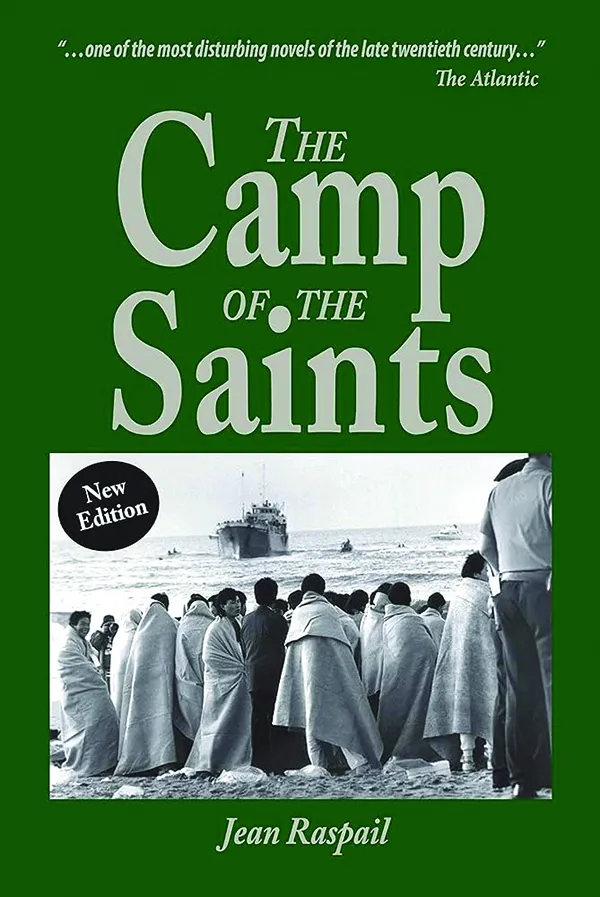First published in France in 1973, Jean Raspail’s novel The Camp of the Saints is one of those books many talk about but very few appear to have actually read. After a long period out of print, rumored to be for political reasons, the book has circulated for years in the form of PDFs and older copies, and thus the basic plot may seem oddly familiar, due to it having been crudely and superficially “mined” as a source text for various right-wing polemics. Now it has reentered the public eye via a new edition and translation from Vauban Books.
Simply put, it presents the “Great Replacement” in a condensed and dramatic form, where an armada of a million Ganges paupers sets sail and lands on the coast of Southern France, leading to an extraordinary collapse and surrender by almost the entirety of Western society.
In the wake of this successful landing and colonization, countless other armadas set out from Karachi, Dakar, and so forth toward all the nations of the West, aided by at least semi-peaceful, Gandhian uprisings by the millions of immigrant helots in the great cities. In this way, the West as we know it slips from our “soft hands” and ends with a mere whimper, giving way to some strange new society.
However, the work itself is far more complex and of far higher literary quality than the second-hand recitations that may be familiar from social media. First of all, while large passages in this new translation still suffer from the turbidity and vagueness that seem inherent in translations from the French, there is also great beauty in the writing, vivid evocations of both the horror and the strange loveliness of these events. For this alone, the book is worth reading.

But for readers on the Right, the most interesting aspect is the profound rigor with which Raspail deprives us of any easy apology for the West, the discipline with which he depicts the material and social reality of the modern West, and the constant subtext that perhaps the sickness of the patient is terminal. Raspail’s most troubling implication is not the racial prejudice that the novel’s critics divine, but that the armada had fate on its side, or might even be a punishment from the God long abandoned by the West.
Raspail again and again compares the West to a “collapsing house” or the “rotten walls of Jericho” and dwells upon the internal decadence and death drive: “Besides, modern man had always had, in some nook of the mind, that curious hope for total destruction, the only remedy for the boredom that consumed him.” The men of the West themselves are depicted almost as parasites upon the past, who occupy the shell of a civilization that no longer exists as a living thing, beings who inherited an “undying vine” but “left nothing of their passage on earth but a forest of TV antennae on their roofs, three foosball tables, two pinball machines.”
“This is why the West had come to despise itself and throw itself on the roads like a herd,” Raspail writes in one exemplary passage, “fleeing northwards, no doubt vaguely aware that it had already lost by extruding so many ugly things not worth the trouble of defending.” Judge for yourself who he is really damning. Almost the only truly positive depictions involve what are essentially relics, the famous “lovely oak door” of 1643, “the silver fork, for example, with its well-worn prongs and the nearly effaced initials of a maternal grandmother,” the “dark angels” of a cathedral where an old priest now resignedly listens to “pagan choirs strumming guitars.”
The armada itself is shown as containing the utmost filth and degradation, and referred to as a vehicle of the “monster” or the “beast.” Yet, Raspail challenges us by giving these invaders a relentless living vitality and even a beauty which he rarely grants to the nominal protagonists, the French. He speaks of “perfect bodies, a lot of them, quick glimpses, flashing by. I wouldn’t want to give an impression of horror. It wasn’t really that. Perhaps the fact that it was surrounded by such wretchedness made the beauty, when it suddenly appeared, that much more moving?”
And in an extraordinary passage near the end of the book, he seems to actively suggest a certain historic superiority of the invaders: “Later, historians would see an epic in this spontaneous migration, baptizing it ‘The Conquest of the North.’ And on this point, we rule in their favor, but only by comparison. We have not forgotten the first panel of the diptych: the flight northwards, the pathetic exodus of the country’s rightful owners, their self-confessed forfeiture, their loathsome renunciation, the anti-epic! When you weigh the two up, all becomes clear.”
This dismal picture is completed by Raspail’s ruthless treatment of the Christian religion. Despite the constant suggestions that the armada was a punishment for falling away from God, modern Christianity (both Protestant and Catholic) is shown as a malign force that actually facilitates the armada on every level. And even the remnants of traditionalist Catholics are shown as an absurd group of antiquarians, entirely without power or even real faith.
Indeed, the last doomed resistance is conducted by a group of reprobates engaging in gallows humor, uselessly slaughtering a group of Ganges beggars on the beach (who are baptized in death by the last priests), reminiscing about visits with a 15-year-old prostitute, and appointing a pimp as their “minister of religion” before being destroyed by the French air force itself.
In the end, the work is not so much a polemic as an extended interrogation or question. It challenges the reader to imagine a West that would not only be able to halt such an invasion but also one that would be actively worthy of saving. Few answers are provided.
Adam Van Buskirk is a writer in New Mexico. Follow him at @AHVanBuskirk.
